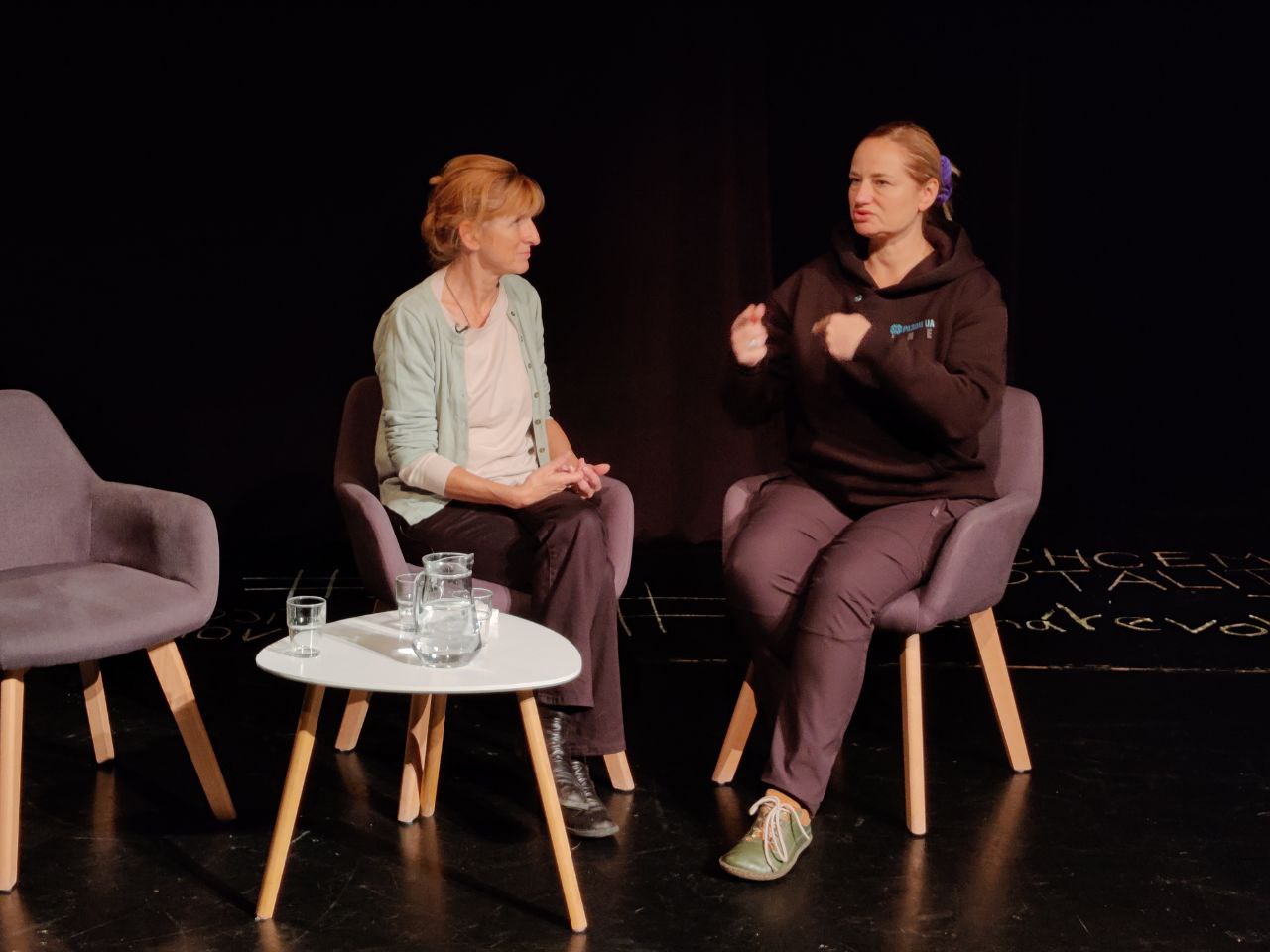It seems that Ukrainians lack a true understanding of the historical processes that have taken place and are taking place in Ukraine. Such a lack of understanding is very dangerous for the country as a whole, as it always makes the simple complex, the quick slow, the cheap expensive, and it also leads to human losses, as we have seen firsthand.
We are trying to comprehend our path in a conversation with Anatoliy Kyrylovych Kinakh, the president of the Ukrainian Union of Industrialists and Entrepreneurs, a politician, a statesman, and the Prime Minister of Ukraine from 2001 to 2002. He has witnessed and directly participated in many significant events in Ukraine's modern history. His understanding and vision of the problems that Ukraine has yet to resolve, or the "turns taken in the wrong direction," deserve broad publicity and discussion in our society.
Life Path
To assess how unique a personality A.K. Kinakh is, and how important his knowledge and understanding are, one must look at his life path.
Born in the village of Bratushany (Moldavian SSR) on August 4, 1954
In 1978, he graduated from the Leningrad Shipbuilding Institute with a degree in shipbuilding engineering.
1978–1981: dockmaster at the 7th military plant, Tallinn (Estonian SSR)
1981–1992: master, deputy chief, chief of production at the "Okean" plant, Mykolaiv.
1990–1992: people's deputy of Ukraine, member of the Commission on Economic Reform and Management of the National Economy (June 1990 – June 1992). He was a member of the People's Council.
1992–1994: representative of the President of Ukraine in Mykolaiv region
1994–1995: chairman of the Mykolaiv Regional Council
1995–1996: Deputy Prime Minister of Ukraine for industrial policy
Since 1996: president of the Ukrainian Union of Industrialists and Entrepreneurs.
Since March 1998: people's deputy of Ukraine.
In 1998-2001: Chairman of the Committee on Industrial Policy, member of the Committee on Industrial Policy and Entrepreneurship, member of the Committee on Economic Policy, Management of the National Economy, Property, and Investments
1999: First Deputy Prime Minister of Ukraine.
2001–2002: Prime Minister of Ukraine
In 2005, appointed as the First Deputy Prime Minister of Ukraine.
2005-2006 – Secretary of the National Security and Defense Council of Ukraine.
2006-2007: People's Deputy of Ukraine. Chairman of the Committee on National Security and Defense (since July 2006).
2007: Minister of Economy of Ukraine.
In 2021: By the decree of the President of Ukraine, he was appointed Chairman of the National Tripartite Social and Economic Council.
Political Position Today
As a person who was directly involved in making important decisions for Ukraine in the economy and politics, who possesses a vast amount of relevant information and reconsiders his path from the perspective of today and the needs of the future, he advocates for a reboot of the political and socio-economic model that has defined Ukraine's development during its independence.
Failed Socio-Economic Model of Ukraine
The awareness of the unfortunate fact that our state follows a failed socio-economic model is growing in Ukraine, but we still lack a systematic vision of the problem, its causes and consequences, and ways to overcome it. Moreover, we still lack unity and consensus in understanding the main issues: how to increase the self-sufficiency of Ukraine's economy, realize our potential, preserve human capital, and create more favorable conditions for business and investment.
A Bit About the "Starting Conditions"
Many still consider the "starting" socio-economic conditions that Ukraine received at the time of regaining its independence in 1991 to be very favorable, and they nostalgically recall the enormous economic potential of the USSR, whose aggregate size placed it alongside the largest economies of Europe. However, it is essential to remember the following:
- Huge structural disproportions, particularly the non-optimal ratio of gross output in the production of goods in groups "A" and "B" – that is, a massive tilt towards heavy and defense industries with a relative underdevelopment of consumer goods production.
- Technological backwardness. The industrial base of the USSR, created in the 1930s, was destroyed during World War II and restored in the 1950s and 1960s based on the same old production schemes and supply chains, which by the time of independence were already morally and physically outdated. The overall resistance of the Soviet economy to the introduction and replication of effective innovations also played a role. Thus, by 1991, we had accumulated a backlog in many sectors.
- Infrastructure backwardness. As of 1991, all types of infrastructure in Ukraine lagged significantly behind the level of leading, and even non-leading countries in the world in terms of technical and physical wear and tear and technical condition.
- Resource intensity of production and the economy in general, related to the previous factor (technological backwardness). For one conditional dollar of GDP, Ukraine spent 3-10 times more of all types of resources, including labor, fuel-energy, and capital; there was also irrational use of all types of natural resources (minerals, water, land resources), high production waste, and a relatively low level of secondary resource utilization.
- Irrational level of so-called "production cooperation," which resulted from "planned economy": technological chains were artificially planned to tie the former Soviet republics to one another, thereby preventing the collapse of the USSR. All republics were dependent on each other for the supply of all types of resources and components. As a result, for example, in 1985, the USSR accounted for 46% of the world's transport work (in ton-kilometers of cargo sent by rail).
We already understand well that the inefficient and resource-intensive monster of the Soviet economy was sustained primarily by high export prices for energy resources. Thus, the influx of foreign currency from exports allowed compensating for the inefficiency of the economy, but at the same time preserved technological backwardness and structural disproportions. This fully applied to the "national economy complex of the USSR" – it was impossible, and even impractical, to maintain it in the form it existed in as of 1991.
We Were Not Alone
But we were not alone in this. All these problems and disproportions inherited from Soviet times were also characteristic of the Baltic countries, and to a large extent, of the Eastern European countries that were part of the "Soviet bloc." Nevertheless, the example of Lithuania, Latvia, Estonia, and especially Poland shows that all these problems can and must (have been) successfully resolved. Poland today is the most dynamic economy in Europe, and in terms of GDP per capita, it surpasses Ukraine by approximately four times.
What is the secret of the economic transformation success of these countries? Obviously, there is no secret, but rather a successful model of socio-economic and political development. Unfortunately, Ukraine has not been able to choose such a model.
"Turn in the Wrong Direction"
One can argue for a long time about where exactly and when Ukraine turned "the wrong way." But it is essential to understand the key factors, namely not to lose sight of the decisive role of the social structure in the medium- and long-term determination of the main socio-economic processes. The development model, whether successful or unsuccessful, is shaped by the social structure. It is only later, when the social structure completely ceases to meet the needs of development, that the moment for changing this structure to a more adequate one arises. It is evident that this moment is gradually approaching for Ukraine.
A clan-oligarchic social structure has been created in Ukraine. Accordingly, it has contributed to the formation of a clan-oligarchic economy. Here, of course, Marxists and neo-Marxists will be dissatisfied and will again say something about the "determining role of the economic base" and the "secondary nature of the political superstructure," but the truth cannot be hidden: the oligarchic economy was created in Ukraine through political decisions made by the political "elite" – particularly through the infamous "large privatization," as a result of which the production and economic complex of Ukraine ended up in the hands of "a narrow circle of limited individuals." It seemed like a new era, capitalism, but in reality – no.
Oligarchic Structure by Its Nature:
- Inefficient. A private owner must be efficient because there is competition. An oligarchic economy is monopolistic, and no imitation of anti-monopoly activity can change this.
- Anti-state. The interests of the state interest the oligarch only where and when the state is engaged in protecting his, the oligarch's, interests. That is why the oligarchy has "bought" the state and state services for decades, resulting in a certain "fusion" of the state and the oligarchy, which we will discuss further.
-
Socially toxic. There are many components:
- it ignores the interests of local communities and inevitably comes into conflict with local self-government;
- it creates conditions for oligarchs to control not only entire industries but also socially significant aspects of life: political parties, media, and even football clubs;
- it constantly generates new corruption flows and schemes that work for the enrichment of certain individuals while harming the national economy;
- it creates a high level of public distrust in institutions, including leading ones (parliament, government, courts, prosecutor's office, media) and general institutional incapacity of the state;
- through controlled media and political platforms, it introduces unacceptable, often anti-state narratives into public discourse that undermine national unity, provoke social dissent, and make civilized internal national dialogue impossible – in fact, it sows discord among people to "mobilize the electorate";
- Anti-people. The oligarchic structure artificially sustains and systematically reproduces the poverty of the people. In fact, it feeds on poverty.
- Unjust. Overall, oligarchic orders undermine the very foundations of justice: people's faith in a fair court, fair social orders, and fair compensation for labor.
This list can and should be continued, but it is worth noting that it is unlikely that the political elite of post-Soviet Ukraine, like Frankenstein, understood what kind of monster they were creating. Nevertheless, the historical and political responsibility for the formation of the clan-oligarchic structure in Ukraine must obviously be acknowledged.
Dangerous Processes
The oligarchic social structure has impacted many spheres of economic, political, and social life with its metastases. The result has been the fusion of the state and the oligarchy, and even the transformation of the state into the largest "aggregate oligarch" – by all indicators: the size of controlled flows, spheres and segments, levers of influence on public consciousness, and even decreasing accountability.
The danger of this situation lies in the fact that it may lead us back to authoritarianism. That is why today, efforts aimed at transforming the state into a service are extremely important – and there are already many positive examples. We have already discussed some of them in our programs. But we need not only a reboot of the socio-economic development model but also the elimination of the oligarchic structure, preventing the transformation of the Ukrainian state, for which generations of Ukrainians fought, into one large "aggregate oligarch."
Hope for the Resistance of Ukrainian Society
The experience of both Maidans and the resistance to full-scale Russian aggression has shown that there are healthy forces in Ukraine capable of defending the Ukrainian Republic from external and internal enemies and becoming a generator of the necessary changes in the social structure. The strength of Ukrainians lies in their ability not to agree to what they are being forced into. Moreover, Ukrainians have shown that at a certain stage, they can even force the state to agree to things that it is not very willing to accept. But this is necessary, as the pressure and coercion of society do their job.
When the time for popular expression of will comes – and it will come, because we know that things will not always be as they are now – it is crucial that this expression of will is qualified. So that people do not just vote for someone but do not allow themselves to be misled again by some populist turbo-promises, so that they understand what the consequences will be, and what challenges Ukraine actually faces. That is why we are already discussing the most important issues, acknowledging mistakes, and looking to the future.




